A Constitutional Republic, where the First Amendment is Essential to OUR Survival
National Parks: Part III, The Cape Hatteras Light Station
After just a few miles south from the Salvo Day Use Area, I visit the wider waters to the east and shoot'em up. It was truly a day of sky and clouds and the theme is overwhelmingly represented in next number of shots on the Atlantic side of the barrier island and a few miles farther south at the second day use area - Haulover Day Use Area.
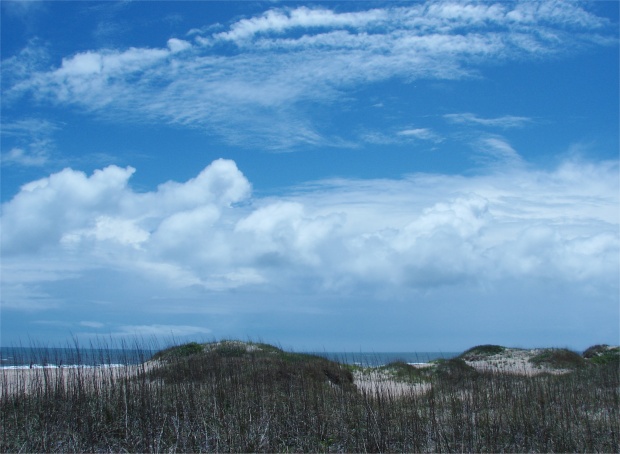
Fishing the surf just north of Cape Hatteras: above. Swimming the cold and rough mid-spring surf: Below.

The Haulover Day Use Area just north of Cape Hatteras: Above and Below.
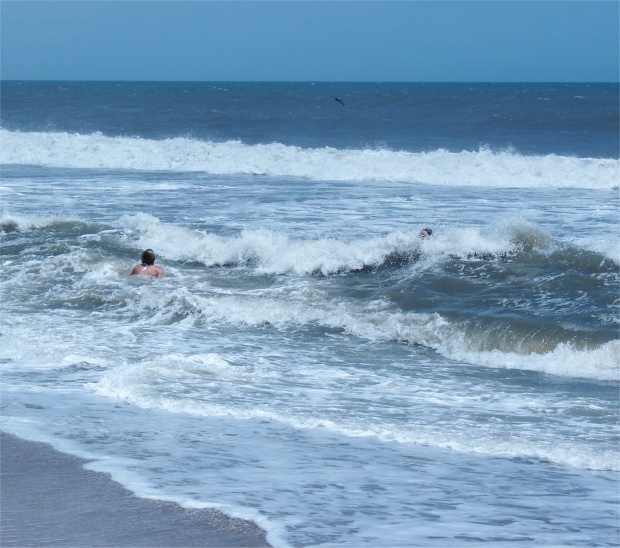
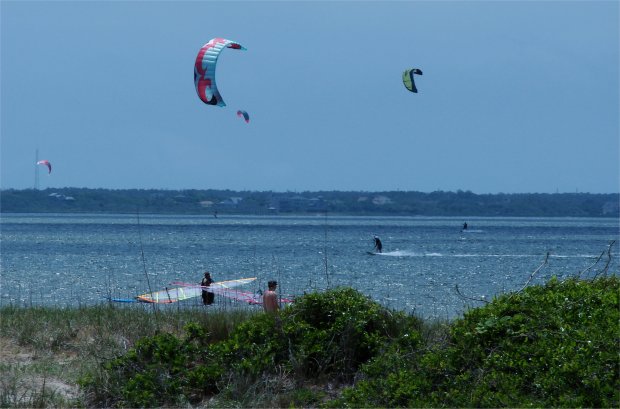
The Haulover Day Use Area just north of Cape Hatteras: Above and Below.
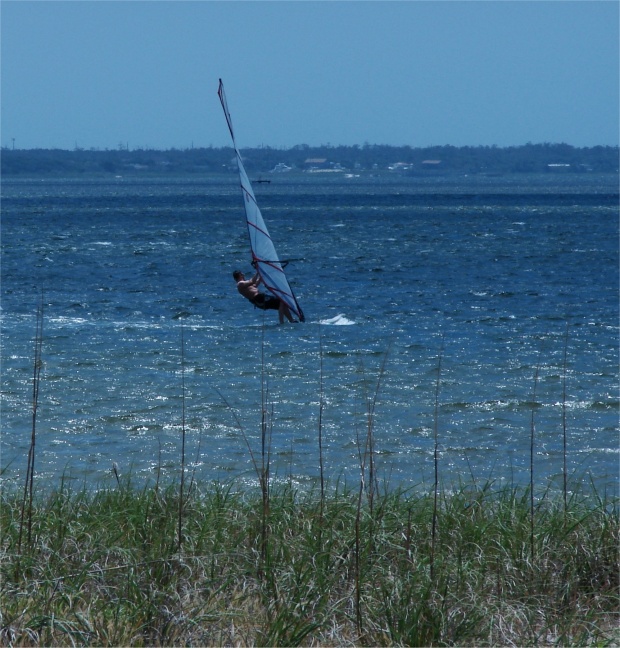
By 1:45 pm, I reached my destination - Cape Hatteras Light Station Buxton, NC. The first light house was completed in 1803 and the light in October. It was built of sandstone and stood just 90 feet tall, quite a bit shorter than the more than 210 feet high lighthouse that stands today. A second lighthouse of 150 feet tall was built in 1853, but was not as effective as needed, so there current lighthouse was constructed in 1870 and is today stands as the tallest brick lighthouse in North America.
The cast iron steps, bolted into the brick walls of the lighthouse with platform decks about every 30 feet where there are windows, consists of 269 steps. As I climbed slowly to the top, I fathomed the duties of the lighthouse keeper, and how he would walk that upward path every 12 hours, while hauling five gallons of kerosene to keep the light illuminating the Fresnel lens burning. Because of the height of the lighthouse and the aforementioned huge Fresnel lens, the rotating light could be seen as much as 16 miles out to those sailors at sea.
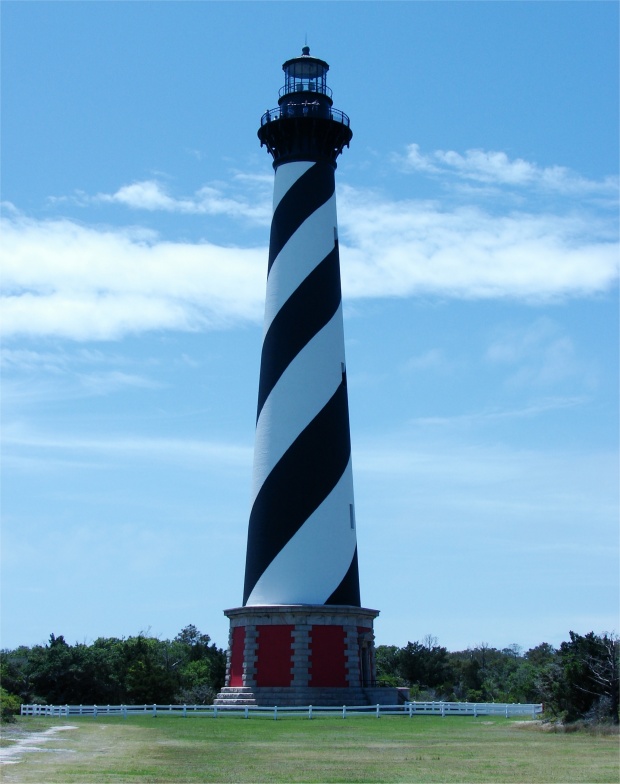
After much debate, the United States Congress enjoined in a public / private partnership to move the entire light station (including both keeper's house) 2,900 feet to its new location - a full 1,500 feet from the seashore. The move was at snail speeding 23 days, and below, I have pictures detailing the distance of the move, and the efforts made to stabilize the beach of the original location before the National Park Service threw in the proverbial towel. Also below I will exhibit another run of pictures (including pictures from the lighthouse balcony) - so hang in there, and remember, "a picture is worth a thousand words."
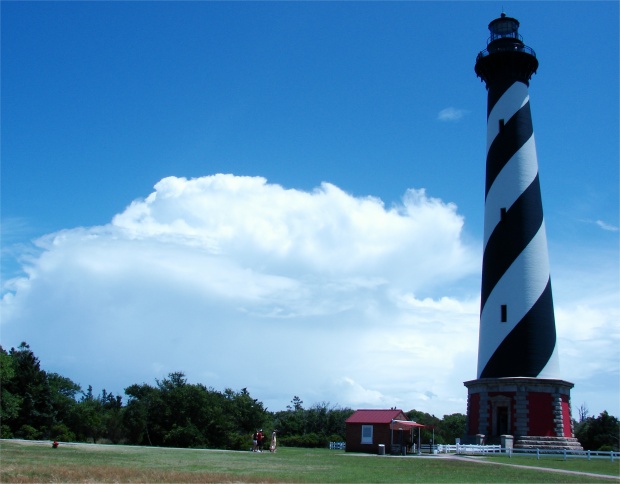
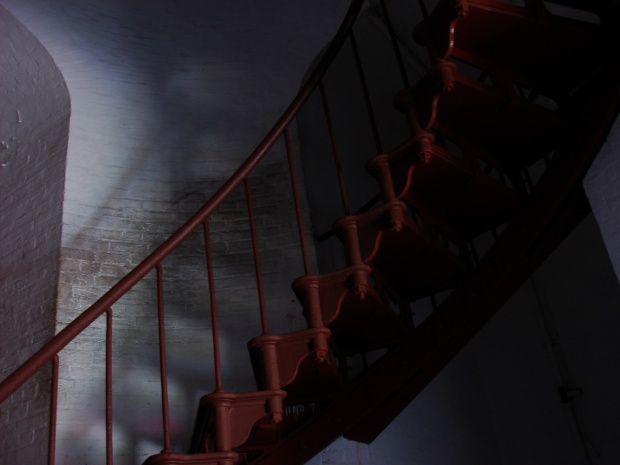
The beginning of the climb upwards. Not for those who suffer from vertigo: above. Looking through the cast iron door opening at the Cape of Hatteras, you can even see children ... especially children, without vertigo, that climb the stairs quite proficiently: Below.
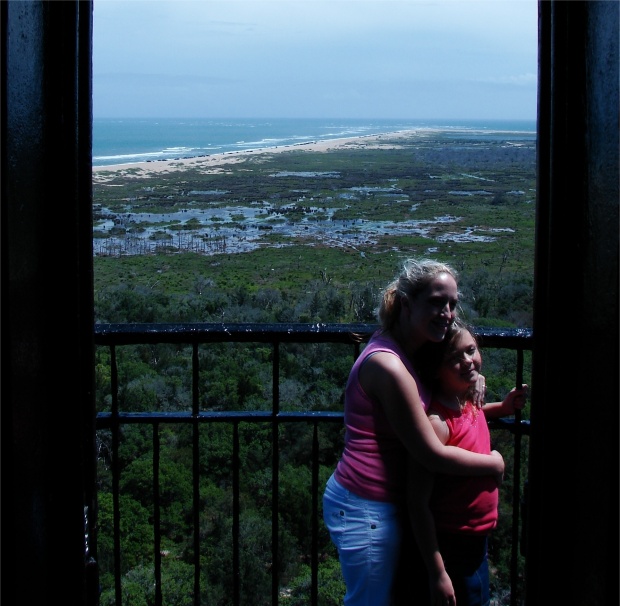
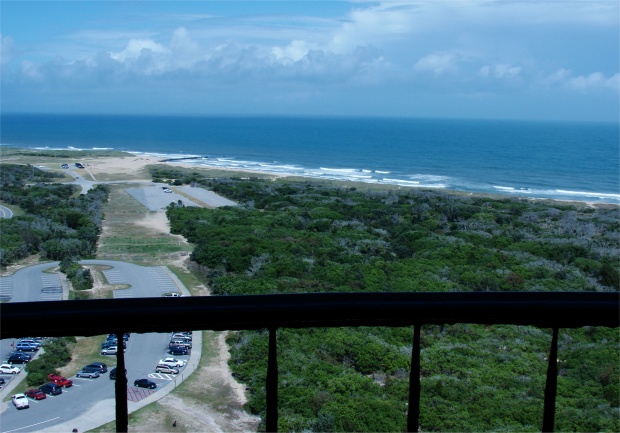
Looking back towards the old site, just to the left of the breakwater: above. Looking down at the keepers' houses that were also moved in 1999: Below.
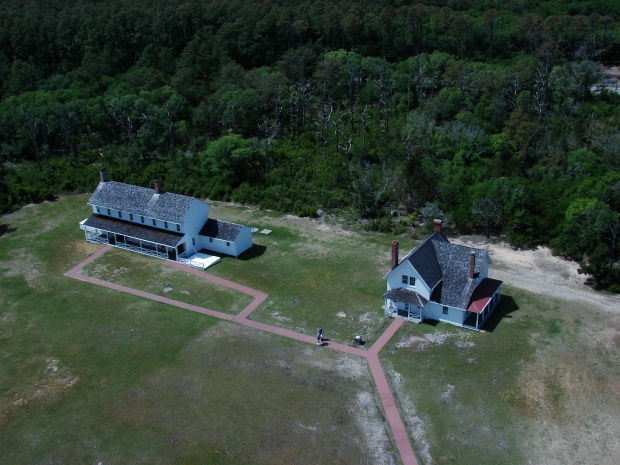
Go Back

Fishing the surf just north of Cape Hatteras: above. Swimming the cold and rough mid-spring surf: Below.

The Haulover Day Use Area just north of Cape Hatteras: Above and Below.


The Haulover Day Use Area just north of Cape Hatteras: Above and Below.

By 1:45 pm, I reached my destination - Cape Hatteras Light Station Buxton, NC. The first light house was completed in 1803 and the light in October. It was built of sandstone and stood just 90 feet tall, quite a bit shorter than the more than 210 feet high lighthouse that stands today. A second lighthouse of 150 feet tall was built in 1853, but was not as effective as needed, so there current lighthouse was constructed in 1870 and is today stands as the tallest brick lighthouse in North America.
The cast iron steps, bolted into the brick walls of the lighthouse with platform decks about every 30 feet where there are windows, consists of 269 steps. As I climbed slowly to the top, I fathomed the duties of the lighthouse keeper, and how he would walk that upward path every 12 hours, while hauling five gallons of kerosene to keep the light illuminating the Fresnel lens burning. Because of the height of the lighthouse and the aforementioned huge Fresnel lens, the rotating light could be seen as much as 16 miles out to those sailors at sea.

After much debate, the United States Congress enjoined in a public / private partnership to move the entire light station (including both keeper's house) 2,900 feet to its new location - a full 1,500 feet from the seashore. The move was at snail speeding 23 days, and below, I have pictures detailing the distance of the move, and the efforts made to stabilize the beach of the original location before the National Park Service threw in the proverbial towel. Also below I will exhibit another run of pictures (including pictures from the lighthouse balcony) - so hang in there, and remember, "a picture is worth a thousand words."


The beginning of the climb upwards. Not for those who suffer from vertigo: above. Looking through the cast iron door opening at the Cape of Hatteras, you can even see children ... especially children, without vertigo, that climb the stairs quite proficiently: Below.


Looking back towards the old site, just to the left of the breakwater: above. Looking down at the keepers' houses that were also moved in 1999: Below.

Comment
|
|
David Winstead said:
( October 7th, 2009 @ 3:47 pm )
Love the photos Stan! makes me want to go there now...
|
| Washington, DC: Part I, Arlington Cemetery | National Parks and other National Places, Body & Soul, Travel | Savannah, Georgia |






















